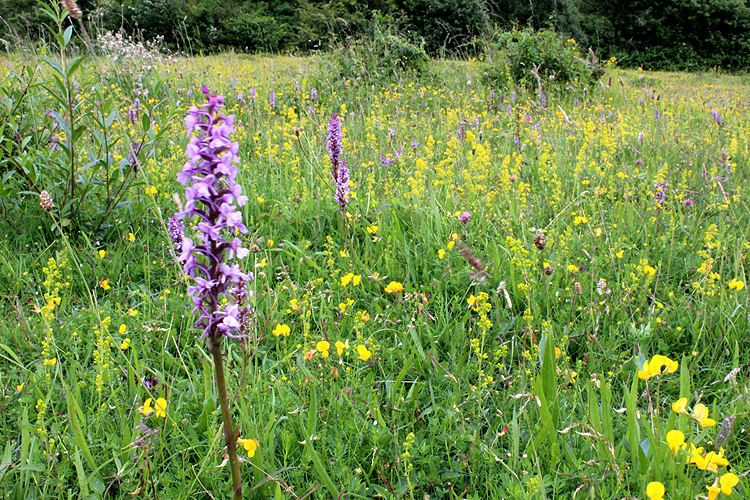
The Chiltern Hills have some of the best preserved chalk grassland in the world. Unimproved meadows are rare, chalk grasslands rarer still.
In the area, we are lucky enough to have some fantastic chalk grassland habitats, full of a rich variety of specialist wild flowers and butterflies. Centuries of autumn grazing on very thin soils, especially those found on the Chiltern escarpment have created the ideal environment for wildflowers. The vast majority of wild flower species cannot compete with modern rye grasses on pasture ‘improved’ through modern nitrogen-rich fertilizers combined with herbicides and pesticides.

A staggering 97% of wildflower meadows in England and Wales disappeared between the 1930s and 1984 (1). Not only has this resulted in a huge decline in wildflowers, and a general degradation of our landscape and national heritage, but also a collapse in invertebrate populations including our much-loved bees and butterflies. Without the rich and varied insect life to sustain them, our wild birds have largely disappeared from farmland areas. All this within a generation. The real tragedy is, that once these landscapes are gone they are virtually irreplaceable.

Species such as the wild orchids require the right mycorrhizal fungi to germinate. The tiny dust-like orchid seeds cannot survive on their own and need a close symbiotic relationship with the soil to thrive and grow. It can take ten years or more between germination and flowering. This is just one example of the difficulty of restoring chalk grassland. In reality, once it has gone, it has gone forever.
It’s not (quite) all doom and gloom, however. There remain fragments of this incredibly precious landscape, of local national and international importance. Chalk grassland is our ‘tiger’, our ‘white rhino’ and we must all work to save what’s left. Farmers can help by setting aside field edges under stewardship programs, and gardeners can do their bit by leaving areas of lawn to grow out from mid-spring to late summer and by planting indigenous wildflower seeds or plug plants rather than the artificially cultivated plants we all succumb to at the garden centre.
If we can start to help restore and gradually reconnect the surviving fragments of chalk grassland we can make the Chilterns once again a haven for bees, butterflies and orchids as well as for commuters, day-trippers and tourists.
(1) The changing extent and conservation interest of lowland grasslands in England and Wales: A review of grassland surveys 1930–1984, R M Fuller Biological Conservation Volume 40, Issue 4, 1987, Pages 281-300
